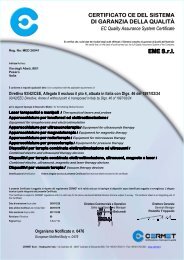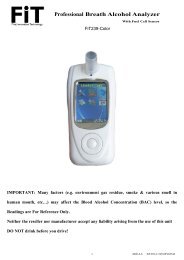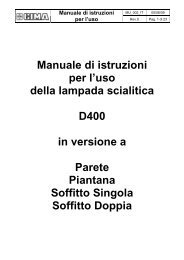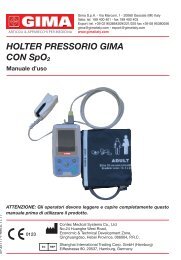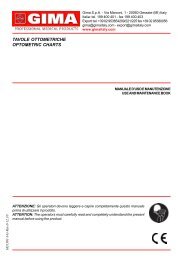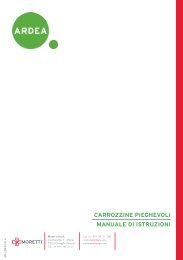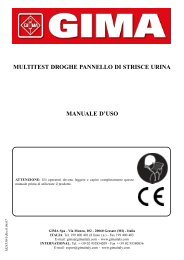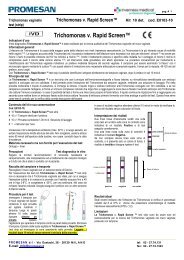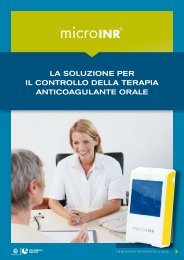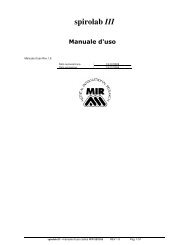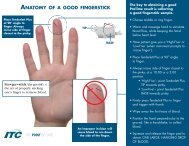Europa B evo Europa B evo 24 - Tecno-Gaz
Europa B evo Europa B evo 24 - Tecno-Gaz
Europa B evo Europa B evo 24 - Tecno-Gaz
You also want an ePaper? Increase the reach of your titles
YUMPU automatically turns print PDFs into web optimized ePapers that Google loves.
ENGLISH<br />
09 STERILIZATION CYCLES<br />
9.1 Descriptions cycles<br />
The autoclave has three series of cycles:<br />
A - operation cycles<br />
B - night cycles<br />
C - test cycles<br />
9.2 Operation cycles<br />
All operation cycles have a system of fractioned vacuum, which therefore permits<br />
sterilization of materials that are hollow, porous, solid, both free and packaged.<br />
Temperatures can be selected from 121°C – 134°C.<br />
Normally the cycles of 121°C are used for thermoplasti cs or sensitive materials, while the<br />
134°C cycles are used for all other materials.<br />
In all cases always follow the indications given by the manufacturer of the instruments or<br />
devices to be sterilized.<br />
There are also two special cycles:<br />
- Prion cycle, studied for the Crutzfeldt-Jacobs disease (mad cow disease)<br />
- Flash cycle created for rapid sterilization of unpackaged instruments and devices.<br />
9.3 Night cycles<br />
The autoclave is provided with a special economizer device.<br />
This device allows the execution of sterilization cycles without the presence of an operator.<br />
At cycle end, if the door is not opened, the autoclave stabilizes and then shuts off<br />
automatically.<br />
Only the general switch remains on (PICT.2 pos. 19.).<br />
Upon the operator’s arrival it is sufficient to press any button to re-start the autoclave and<br />
read the cycle result on the display.<br />
Besides that the printer will have regularly prepared the written report relative to the same<br />
cycle.<br />
25



